As COVID-19 continues to disrupt classes, the education sector has to turn digital to connect with students. However, the engagement in virtual learning is not as engaging as physical classes’ engagements.
Berjaya UC would love to explore more alternatives to enhance the learning
experience and bridging the gap between educators and students.
The Scoring in the Workshop
The workshop covers guides on understanding gamification purposes, mechanics, psychologies, and real-life examples.

The team provided five options for the guest to earn points, which are;
1) 50 points for answering a question
2) 100 points for asking a question
3) 50 points for punctuality between breaks
4) 200 points for providing suggestions
5) 500 points for keeping the front camera active
6) 300 points for liking social media pages
7) 500 points for using the workshop’s unique hashtag on social media.
The host used the points earned throughout the workshop to determine the participant on a leaderboard. The top winner gets to win a copy of ‘Life Matters’ and ‘Personality Matters.’
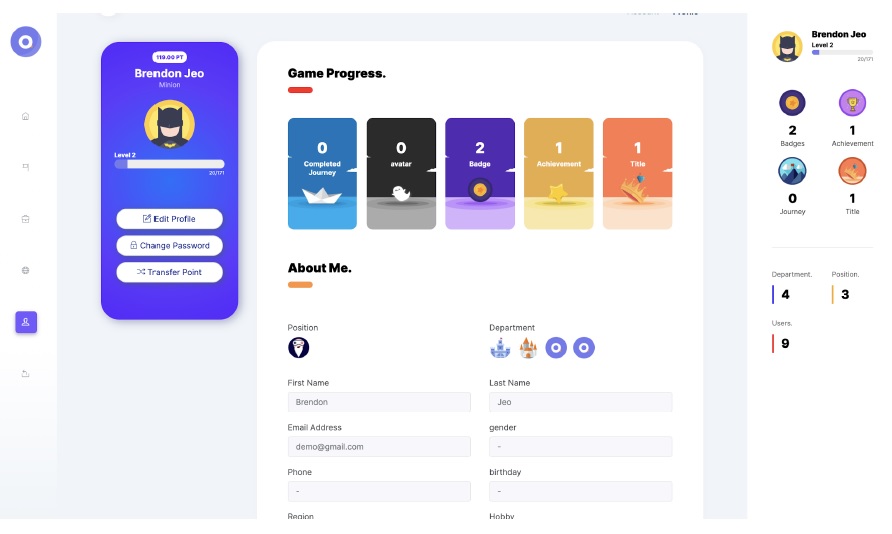
Introduction of TraitQuest
TraitQuest is a gamification software, consulting, and solution provider for enterprises looking to add game elements to better their teams’ engagement.
Learning Style, User Types and Habits to Change
During the session, Reuban raised his hand and earned several points, promoting encouragement to other lecturers and the hosts.
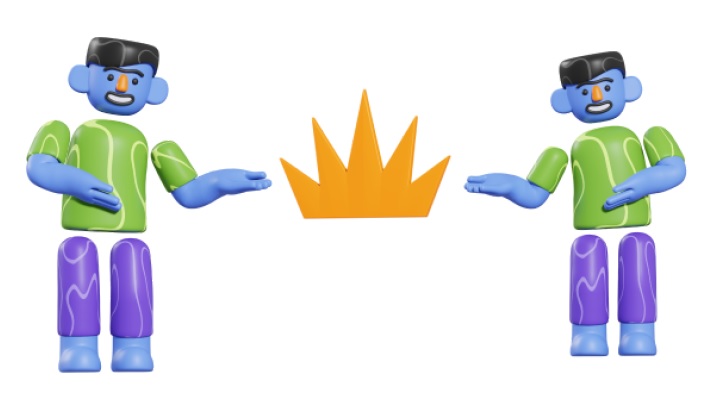
Why Gamification in Learning?
In a simple word, to gain better engagement from lecturers and students. An excerpt from Kapp, Karl M’s book ‘The Gamification of Learning and Instruction Fieldbook.’ mentioned several points of what the public thought of gamification. ‘They are cool, awesome, fun and neat.’, ‘Because everyone is doing it.’, ‘The learning will be effortless.’ and ‘It’s easy to design them.’ This reasoning is not valid in most cases. It is only part of the reason but not entirely.
Difference between Games vs. Game-Based Learning (GBL) vs. Gamification
For games, the focus is always on the player’s experience. All games share the need for better player’s experience.
For Serious games, it is common during learning. For example, you have medical school students playing simulations to improve their surgery skills. Students will use Virtual Reality or Augmented Reality as a medium to learn faster compared to traditional methods. The U.S military also uses a game called America’s Army to hire and train their recruits.
Whereas game-based learning (GBL) is solely for learning how to achieve specific objectives. The core difference between different forms of games is their processes and purposes.
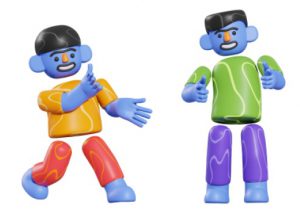
Engagement and Motivation
The Challenge level is the difficulty of completing a specific task—for example, the challenge level between cooking a Nasi Lemak and Instant Noodle. It is easier to cook and prepare an instant noodle than Nasi Lemak because of the preparation time, resulting in a different challenge level.
The Skill level is the amount of skill required to solve specific challenges. Having a low skill level is having apathy and boredom. Taking the same cooking context, if you were to ask a 5-star chef to cook an instant noodle, it would probably be relaxing for him/her.
Gamification uses the Skill Level and Challenge Level diagram. What we want to achieve are engagement and motivation. Quote from Karl M., ‘To create interactivity in learning delivery.’, ‘Overcoming disengagement.’, ‘Providing opportunities for deep thoughts and reflection.’, and ‘Positively change behavior.’.
Imagine in class, lecturers having the opportunities to have deep thoughts and provide feedback on improving students’ engagement. Deep thoughts are also a part of creative thinking and analytic thinking.
Ronald (Berjaya UC) used Maslow’s Hierarchy of Needs in comparison to determine a connection for gamification.
Reason of Gamification
The very fundamental of gamification is to understand the user type and their learning preferences. Plus, the main reason for implementing gamification is to create interactivity in learning delivery and to tackle low engagement. At the same time, creating opportunities for deep thought and reflection. Not only that, learning becomes a two-way street.
With all the above, it will help the participant to discover a better outcome.

Brain Dominance Thinking
One’s perception and thought process dramatically affect the way one learns. For example, if a lecturer used an organized and sequential method to tutor a student who thinks holistically, intuitively, and integratively. It will not be effective because it does not resonate with how the learning delivery is delivered and perceived.
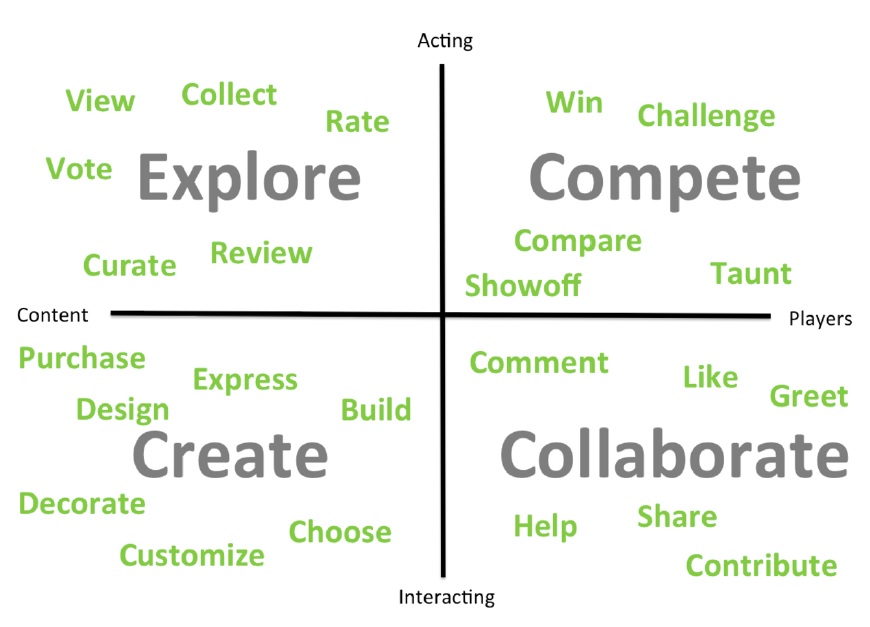
Bartle user type
A Bartle’s Player Types can be used to the difference between user type;
i) Killer – Learns by completing challenges and competitions. They like to win and achieve the highest score.
ii) Achiever – Status and recognition are what they aim to win.
iii) Explorer – Explorer loves discovering and supporting new things. Oftentimes, they prefer to act by their own volition.
iv) Socializer – These individuals love to form a group and work best within a structured team. Collaboration is their key to success.
The challenge with gamification is that similar mechanics are not applicable for different user types. The more you understand your user, the better the engagement will be. Content planning, creation, and design use a similar approach as above. Some people like to express, compete, explore or collaborate.
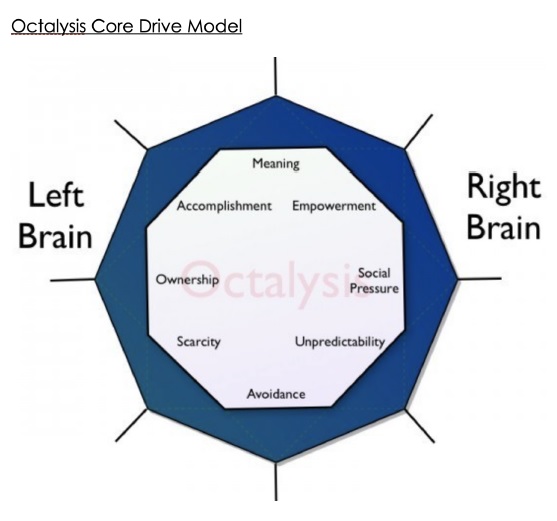
Octalysis Core
The theory behind octalysis core is to distinguish the difference between the left and right brain. Left brain dominance indicates a person’s likelihood to prefer accomplishment, ownership, scarcity. In contrast, the right brain is empowerment, unpredictability, and the tendency to succumb to social pressure.
Piggyback on habits, study their daily routine.
Habit plays a huge role in gamification. The three ways to design gamification is to make references to your audience’s habit. Identify the relevant habits and unmet needs, then look for emotional and situational triggers. A user persona will come in handy too. Netflix is one of the best real case scenario whereby they determine a person’s habit by the type of show they watch, the time they log into Netflix, watch time, and more other data.
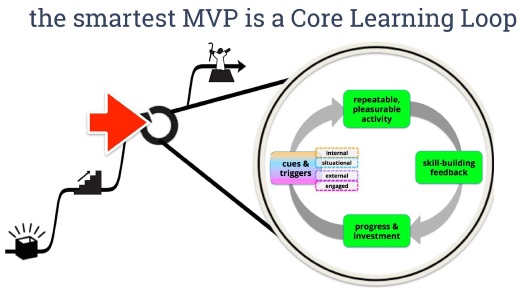
Learning Loop
The learning loop is part of the skill-building habit.
Cues & Trigger -> Repeatable Action -> Pleasurable/Pain Activites -> Feedback -> Progress &Good/Bad Investment
Cues & Triggers is a starting point for new habits; it could be either internal, situational, or external factors. For example, traffic congestion (Trigger). It is a known trigger to cause anger (Repeatable Action), leading to honking or outrageous driving (Pleasurable activity). This is irony because, in some way, it helps in developing better driving skills. (Progress in skill development due to cutting corners to go faster.)
The final part is progress and investment. Progress and investment in the gamification learning loop is dependant on one’s mood. The majority of the people subconsciously are heavily invested in their progress, leading them not to want to break the loop.
Gamification is not only about badges, points, and leaderboard. Gamification heavily focuses on behaviorism. We need to understand the user and define the objective, then covering the goals, rules, feedback, and reward. The golden rule is purpose, autonomy, and mastery.
As a game master, you need to set rules, boundaries, and limitations. Without those, the game will not happen because people will not react with how you want them to react. Without reaction, there can be no feedback as feedback acknowledges the user’s action and progress, which is the gamification pillar.
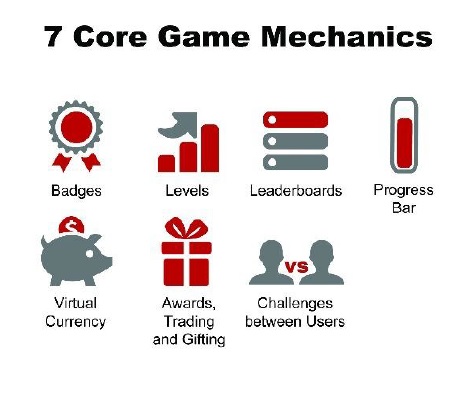
Mechanics: The rules or verbs of the game.
Some of the common mechanics that most people experienced daily. Ikram mentioned how we can apply mechanics to different individuals. The main point isn’t to specifically apply it but to understand the type of person in your session and how to apply unique mechanics based on your scenario.
There are also mechanics that can be used to incorporate everyone. For example, Zoom, we have been using Zoom for so long. And we found out that, after a prolonged session, participants will feel bored. To counter that, we will prompt the users to type something, short breaks or move around.
In other examples of gamification mechanics, there are collectible mechanics in Pokemon Go, because they are people who like to collect. Imagine when you are younger, it works the same as you are collecting stamps. There are players who would go as far as collecting ultra rare collectibles in game. COuntdown is also one of the mechanics. Progress is also important because without structure, it will be an endless same cycle that will eventually bore the player.
Dynamics: How the players use those rules around a game
You cannot just rely on mechanics alone to make games interesting, dynamic plays a huge factor to ensure the game doesn’t break it’s own flow. You need to have certain challenges to match with certain skills so that the game will flow.
Aesthetics: How the game makes the player feel
80% of the time, it is mostly about how it looks and feels. Is it interesting, is the design intriguing enough, is there good sound design and etc. It is about the theme, not only about how high tech it looks. Going back to chapter 1 and 2, it is also always about the objective. Minecraft is one of the examples that you don’t need a huge amount of aesthetic to make the game work.
In a FUN system
Mechanics represents the Rules, which describes the particular components of the game, at the level of data representation and algorithms.
Dynamics represents the Systems, which describes the run-time behaviour of the mechanics acting on the player inputs and each others’ outputs over time.
Aesthetics represents the Presentation, which describes the desirable emotional responses evoked in the player, when he/she interacts with the game system.
Learning is the most straight-forward gamification and easy to start. Like some of the participants who had kids mentioned, that their kids would just pick up the iPad and discover it. Intuitive is also a part of aesthetic where they click around the iPad to go through a new journey, So when designing a journey, each user types and age audience are different, they respond differently to wording, colors and elements. Like when we do a presentation slide, the wording must have certain font sizes, not too wording and not too graphical, so it has to be a combination.
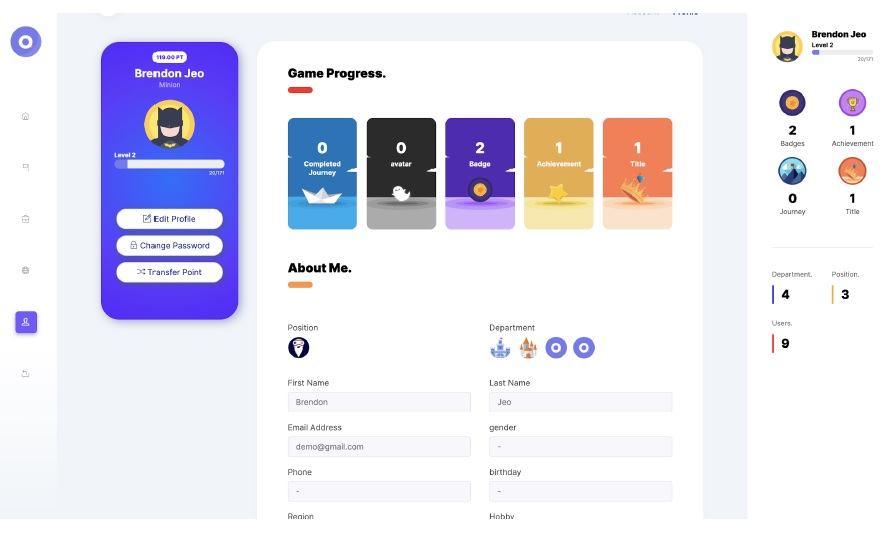
Points, Badges and Leaderboards is the basis of a gamification.
For points; you can know these several factors (Quantitative) :
1. Scoring
2. Rewards
3. Win/Lose State
4. Provide Feedback
5. Display of Progress
6. In-Game Currency
For badges (Qualitative / Aesthetics );
1. Achievements
2. Flexibility
3. Style
4. Signalling of Importance
5. Credentials
6. Collections
7. Social Display
During schooling days, most of us who participated in clubs (e.g, Scout) would earn badges.
For Leaderboards (Evolutive/Social);
1. Ranking
2. Comparison
3. Competition

Talking points from the participants:
Reuban: ‘I have heard of gamification around here and there this year. I guess one thing that I can take home today is, there are various models of gamification framework. The question is how can we design holistically.’
Ronald: ‘Before coming in this workshop, I had a different understanding of
gamification, its always about reward. I never understand why people get hooked on Pokemon Go because there is nothing they can do besides collect in-game collectibles. It’s refreshing to know that gamification is not only about rewards. It is also about the motivation factor to test whether there is purpose for one to continue or stop something.’
Nabila: ‘Looking at gamification and my own personal view on it. Today, I think I get to know gamification better and look forward to learning how to design and apply it to real life applications.’
Hayati: ‘For me, I have heard of gamification but I only found out today is, there are 2nd steps to ensure gamification works.’
Eren: ‘What I wanted to share is, gamification is very difficult from what I heard several years ago. It started from the event industry. Instead, how I am looking at it now is, how can it be fit into the education sector. I found the first 2 chapters to be very structured and easy to follow, the objective was clear. The one thing I learnt here is, one has to understand the users, instead of just reward based gamification.’
Kak Devi: I heard about gamification in chapter 1 and 2, but I wanna discover more about the characteristics of the learners. Sometimes, as a lecturer, we try to make them as a single characteristic but actually they are not. It will be great if we could personalize gamification to tailor to various different personalities across the students.
Rubin: Since I am taking care of the internship program, we had to opt for an online based programme due to the pandemic, I did a project with Eastern Hotel and they embarked on a gamification. But, the gamification process was more on HR, it was more in-depth and harder to replicate for the student’s setting. The part where I love the most was, Leo mentioned about the impact of the left and right brain, where he dive into the meaning, power, ownership, scarcity and social influence. I believe there are many gamification theories, but we have to look into what is more applicable for student engagement in the classroom.
Liyana: Gamification is interesting because I believe it not only is helpful for motivating the students, but the educator themselves to create much more engaging content. For example, I wanna ask the student to use Instagram videos to capture certain things, having them to create content during the class.
Wan Nee: For us educators, we can use this since the majority of people are using online learning. It is difficult for most of us to adapt in online learning and I am looking forward to seeing how we can use gamification for this.
Kit: I find gamification interesting, especially the part where we need to learn about the personality of our targeted learner before we can implement gamification. Was wondering if there is a quick personality test where the students can take for us to quickly determine how we can create customized gamification for the students.
Justin: The several benefits of gamification is, it is relaxing during learning especially during in class settings where most of the time students are daydreaming instead of learning. But in gamification it is different, you have a phone and laptop in front of you, you can use images and graphics with good design to create more engaging learning material compared to traditional slides or words. End of the day, gamification can be the next teaching method since it is a very connective way to teach. It also can be constructive and when it comes to this, gamification can be very useful to the younger generation. I also believe it can be used to promote better e-learning and it will become the future.
Chris: Gamification can be used to improve and enhance learning since we can make learning more interesting.
Example of challenges faced during lecturing.

